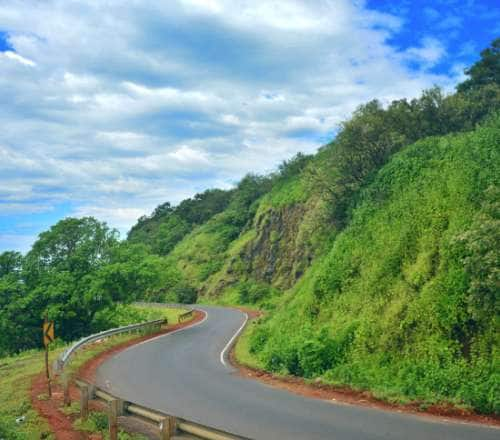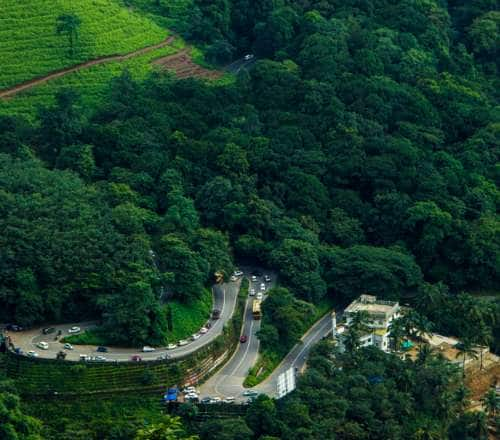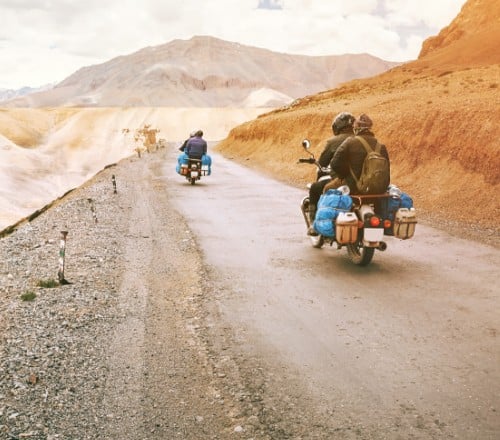Stay logged in to proceed with bookings, orders and offers.
On changing the terminal, you will loose items in your cart. Are you sure you want to change your terminal?
Lessons I learned as a 22-year-old woman hitting the road alone
I remember the day I fell in love with travelling. I was a thirteen-year-old girl in one of the umpteen tourist boats on Naini Lake, in Nainital, Uttarakhand. It was a sight – vibrant patches of orange, white, and blue speckled the emerald waters of the lake. Seeing my expression of wonder, the boatman offered me one of the wooden oars, beckoning me to row with him.
There I was – surrounded by verdant mountains, rowing a petite wooden boat, and chuckling at my accomplishment. The mountains, lakes, and sunsets of Nainital have remained ingrained in my memory since that April.
Life took sail, as it does for a middle-class high-school kid. It wasn't until eight years later that my explorations began anew, with an incredible solo trip to Varanasi. Next on my travel trail came Ladakh, with all its bewildering highs and lows.
I had quit my first job as a copywriter and applied to volunteer at a popular backpacker hostel chain. I still remember it was my last week of probation on the job when I heard from the hostel chain. I'd been selected to volunteer at Leh for 30 days! With this, I rolled off on a 45-day journey across Himachal Pradesh, Ladakh, and Kashmir.
Read More
Read Less
Every year, travel lovers rejoice when the Manali-Leh Highway is thrown open to tourists. In 2018, the highway opened on 1 June, and it was at 4:00 am the same day that I boarded the HRTC bus from Manali to Leh.
When I hopped aboard the bus, I wasn't quite sure what to expect from the road ahead. What I did know was this: I was taking one of the most treacherous routes in the world, and unlike most tourists who rely on a comfortable 6-seater taxi, I was traveling aboard a state transport bus. I was apprehensive about throwing up during the bumpy ride (I’d heard stories). So I chose not to eat anything when the bus stopped over for breakfast at a place a little away from Keylong.
As the bus approached a higher altitude, I started feeling dizzy, and my brain fogged up. I informed the conductor, and he asked me if I was eating well and drinking enough water. My answer was a plain “no” – much to his dismay. A Russian couple promptly offered me their packed aloo paratha while the conductor arranged for a garlic clove for me. He said that chewing a clove of garlic (with the peel on) would help with acclimatisation — and he was right.
The filling meal, plenty of water, and probably the garlic clove worked in my favour. At sundown, we reached Pang, a tiny settlement en route to Leh. We stopped here for an overnight halt. It was a scramble to find a bed at the available accommodation. If you’re picturing a hotel, may I prompt you to shift your vivid imagination to a makeshift camp?
We started early the next morning. However, this time, I was sure to devour a filling breakfast of bread and omelette before I boarded the bus.
With this comes lesson #1: Acclimatisation is no joke. While I was lucky to reach Leh unscathed, I have heard of people encountering medical emergencies owing to the lack of oxygen one experiences at a higher altitude.
Top Tip: Be sure to set aside at least 30 hours for acclimatization. Eat well, stay hydrated, and carry your medication for altitude sickness.
After the first few days of resting and learning my role as a volunteer, I was out and about, taking my time to explore the city of Leh. I spent my initial days walking around the market, occasionally popping into a cyber cafe to surf the internet, as well as trying local dishes and cheesecakes.
Soon enough, I was planning a two-day getaway to the lesser-known Tso Moriri. Located in the Rupshu Valley, it is a pristine lake 200 km. Southeast of Leh, close to the Indo-Chinese border. Surrounded by mountains, the lake lies at an altitude of 13,123 ft. above sea level and is the place to see Himalayan marmots and Tibetan wolves.
A fellow traveller at the hostel allowed me to hitch a motorcycle ride to the lake. This was not my first time riding a pillion with a professional rider in the highlands – which are nature's ultimate playground for motorcyclists – but also my introduction to the varied landscape of the state of Ladakh.
I’ll quickly squeeze in lesson #2 here: Always go beyond the popular places. While Tso Moriri may seem an obvious choice for a trip to Leh today, not too many travelers knew about it back then. The spectacular route to the lake winds along the turquoise waters of the Indus river on the right, with a jaw-dropping view of the Rainbow Mountains on my left.
After chomping on chocolate bars for lunch, we reached the rustic hamlet of Karzok by evening. Stretching along the shores of Tso Moriri (I say 'shores' because the lake has a 102 sq. km. shoreline), Karzok appears to be stuck in the dusty spirals of time. Peppered with mud and wood structures, the village could be plucked straight out of a Tolkein novel.
The next day, we hiked up a hill to a viewpoint to soak in the glorious views and took another downhill trek to the lake. Soon after, we were back on the road to Hanle. However, the weather had grown unpredictable; we thought it would be best to travel back to Leh to avoid any trouble, so we made our way back to the city.
So here comes lesson #3: Take your time with each place. It's a good idea to set aside a buffer period while travelling. I met too many travellers who had planned and booked their whole trip in advance. When they arrived in Leh, they learnt about many other places they'd have loved to visit but couldn't because they were bound by their pre-decided itineraries.
On 23 June 2018, I had the opportunity to witness the grand celebrations at the annual Hemis Festival at Hemis Monastery, about 40 km southeast of Leh. Like a true backpacker, I took the bus to Hemis. The venue was crowded with tourists from across the world. I spotted many a journalist and photographer from foreign lands, documenting the vibrant celebration, music, and dancing.
The merriment unfolds with Cham, a masked dance performed by monks, showcasing the triumph of good over evil. Locals perform other traditional dances too. A handicrafts exhibition is organized as well during the festival. The atmosphere is festive and high-spirited, with locals and visitors gathering here for two days to drink chang (a local drink), dance, and pray to the Almighty.
So lesson #4 was a valuable one: Do your research and find local places to explore. I wouldn't have had the opportunity to experience the charms of the Hemis Festival had I not followed through on a recommendation made by my local friend. Over the next few days, I discovered things about Leh that I wouldn't have known otherwise – folklore, traditional dishes, and many wholesome knick-knacks! Did you know the famed momo was originally called mok-mok in Ladakh?
There are bus services from Leh to Pangong that run from Tuesday to Friday. You can also do a round-trip by taking the ride back from Pangong to Leh. My plan was simple: board the bus on Thursday, explore the lake for a day and a half, and board the bus back to Leh the next day. Situated at the height of around 14,271 ft., Pangong Lake holds the distinction of being the highest saltwater lake in the world.
With a shoreline extending for approximately 160 km., the lake is split between the Indian and Chinese boundary — about one-third of the lake lies in India and two-thirds in China. I took a long walk along the shores of Pangong Lake. I spotted four rainbows soaked in gorgeous vistas of the lake's shimmering waters. I had the company of another two backpackers in the three-bedroom; I paid INR 1,000 for dinner, stay, and breakfast the next morning. I had a simple meal of dal chawal and sabzi for dinner in a cosy room, with the crackle of an old TV set keeping us company.
The final destination on my travel trail was Nubra Valley, of course. Bactrian camels, orchards, a patchwork of green fields, monasteries, and the sand dunes of the cold desert are reason enough to visit this gem. Hunder, on the other hand, is a picturesque village with a freshwater stream dissecting it in the middle. A walk around the village takes you past the backyards of houses, which abound with luxuriant crops and plants.
Around 200 km northwest of Hunder lies the village of Turtuk. To reach the village, I hitched a ride with a cheerful Ladakhi local named Tenzin. He was kind enough to show me around Turtuk as well. We plucked fresh mulberries off of the lush bushes, crossed narrow bridges over gushing streams, and even hiked to the local monastery, which treated us to some of the finest views of the surrounding area.
That's where I picked up lesson #5: People are usually nice. I met some wonderful people on my journey who were happy to help in unusual circumstances. There was Tenzin, who gave me a ride to Turtuk and all the way back to Leh the next morning; the kind lady who served me a homemade meal at Pangong Tso while taking care of her young kids; and the warm-hearted conductor who got me a clove of garlic to ward off dizziness. While I cannot emphasize enough the need to be careful with whom you trust and what you do, meeting these amazing people was a reminder to believe in the good out there.
Another place worth a visit is the Phyang Monastery, which is located on the Leh-Srinagar Highway. If you drive down this serpentine road, you will reach the site of Sonam Wangchuk’s ice stupa, an architectural feat that has been covered by National Geographic and other reputed publications. Located 12 km southeast of Leh is Shey Palace, which makes for a pleasant visit as well.
The gompas of Thiksey, Phuktal, and Stakna are also worth seeing. Thiksey is bound to sweep you off of your feet with its location. For a change of pace from the monasteries and gompas, you can go hiking in Hemis National Park (at your own risk!). If you are continuing onward to Srinagar by road, be sure to make a stopover at the Lamayuru Monastery.
It’s time I got to lesson #6: The local cuisine tells you a lot about the region. To date, I associate Leh with piping hot shyapale, met-in-the-mouth yak cheese, and luscious lemon cheesecakes. Thenthuk, thukpa, momo, chhang, skyu, and tingmo are some of the other delicacies I tried over the course of a month in Leh. I have to say that food proved to be one of the most intriguing ways to learn about a place, its people, its history, and more.
Bidding goodbye to the many adventures I experienced in Leh, I boarded the bus to Srinagar on 1 July. At this point, what awaited me were 10 days filled with awe and wonder at the beauty of the "Queen of Valleys" – but that is a story for another time!





The Adani One expressly disclaims all liability, direct and indirect, in respect to actions taken or not taken based on any or all the contents of this Blog. The Blog is an opinion of the contributor based on the collation of data from various sources and is provided only for information purpose. Adani One does not canvass, advertise, solicit, invite or induct for any product, merchandise, information, brand or any other materials mentioned in the Blog, nor does it obtain any monetary benefit from the same. Reader is advised to read and apply his/her intellect and discretion in this regard. Any Intellectual Property mentioned in this blog belongs to the rightful owner. We do not intent to claim any interest over the same.